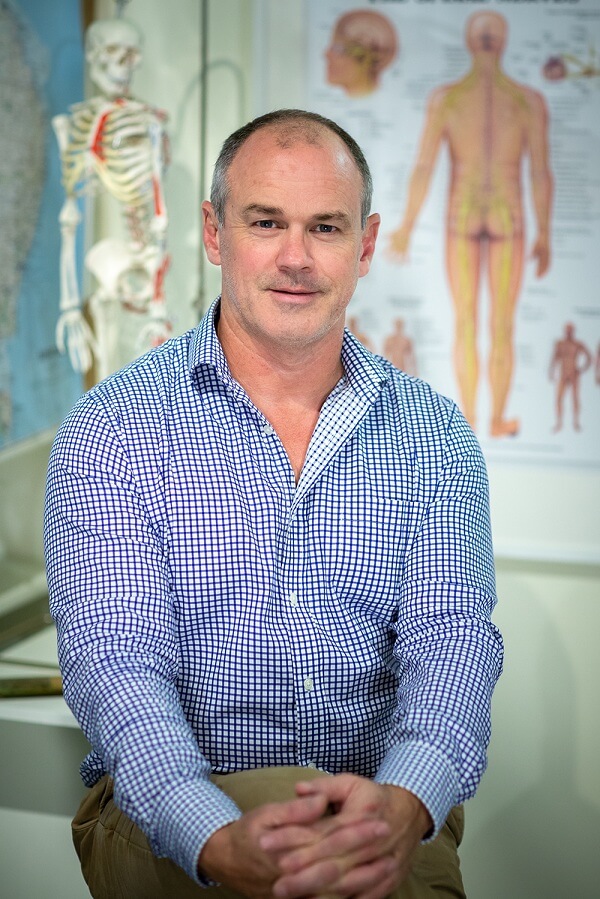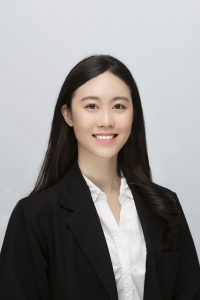20+ Years Experience
Camberwell - Kew - Doncaster - Hawthorn - Box Hill - Surrey Hills
Expert Chiropractic Care in Balwyn
Camberwell - Kew - Doncaster - Hawthorn - Box Hill - Surrey Hills
Expert Chiropractic Care in Balwyn
Camberwell - Kew - Doncaster - Hawthorn - Box Hill - Surrey Hills
Balwyn Chiropractor | Dr Jerome Dixon

BAppSc(Chiropractic)
BSc(Biochemistry)
Jerome’s goal is to help relieve discomfort, identify the potential cause of a patient’s health concern, and apply treatment that allows the body to rehabilitate with long-term results.
With over 20 years of Chiropractic practice experience, Jerome combines his knowledge of the spine, muscles and joints, specialized chiropractic techniques, and a holistic lifestyle assessment to bring relief and movement freedom to his patients experiencing headaches, migraines, back & neck discomfort, repetitive strains and nerve problems.
Jerome would love to be able to assist you with:
- Treatment for MusculoSkeletal pain, Spinal problems, Headaches and Migraines.
- Public education and awareness of common health conditions.
- Corporate Health and Wellness consulting
Jerome is:
- A member of Chiropractic Australia
- Registered with AHPRA (Australian Health Practitioners Regulation Authority)
- Member AON (Professional liability & indemnity).
- Editor of leading Australian Health Website: www.headache.com.au
- Victorian Government BetterHealth Channel Content Partner
- Post graduate studies in SOT (Sacro Occipital technique- a gentle non manipulative technique) as well as Headache & Migraine management seminars.
Balwyn Chiropractor | Dr Bianca Kho

BAppSc (Chiropractic) RMIT
Dr. Bianca Kho is a double distinction graduate in Chiropractic Science and Health Science from RMIT University. She is currently pursuing specialisation in Applied Kinesiology and Sacro-Occipital technique. She is registered with the Australian Health Practitioner Regulation Agency (AHPRA) and a member of Australian Chiropractors Association (ACA).
She has a strong passion for dance since the age of 8. Dr. Kho had been a state-level rhythmic gymnast, high-school cheerleading captain and a ballet dancer. She participated at national and international competitions in Singapore, Hong Kong, Taiwan and Japan.
She developed a strong interest in Chiropractic Care after experiencing first-hand positive effects of Chiropractic treatment for injuries incurred from dance. She is currently undertaking a Pilates instructor certification course with National Pilates Training.
Bianca is passionate to use her knowledge and skills attained in Chiropractic Care to help her patients enhance performance and rehabilitation in sports.
Every patient has individualised care, selected from a wide range of therapeutic approaches. For a healthier you – we do a lot more than just treat the symptoms.
Qualifications
Dr Jerome Dixon is a graduate of the Bachelor of Applied Science [Major in Chiropractic] at RMIT University.
Furthermore he has completed a Bachelor of Science with a double major in Biochemistry & Microbiology at La Trobe University; and has also completed key components of the undergraduate program in Dietetics at Deakin University.
Dr Dixon is the Editor of www.headache.com.au a head pain information site and Victorian Government BetterHealth content channel partner and is a member of Chiropractic Australia.
Methods
Dr Jerome Dixon and Associates use a considered approach to each individual patient, this has evolved over 15 years of clinical experience. Therapeutic approach is dependent upon the History, Diagnosis and severity of the condition, as well as any contraindications to care. A number of modalities have been refined over time: including SOT (Biomechanical wedges ‘Blocks’), Activator, Mobilisation & Stretches, Soft tissue therapy, Trigger Point therapy, Cox Flexion distraction-specialized traction table, and gentle-specific spinal Adjustments and manipulation. These techniques are selected according to the patient; ranging from elderly people with Osteoarthitis and Osteoporosis, to Sports people to infants.
Types of Care.
There are generally 3 types of care:
1. Acute/Relief Care:
Pain relief and restoration of capacity (basic movements) is the priority. Symptoms may subside quickly over a couple of visits, or over a few weeks- depending upon severity and chronicity.
2. Rehabilitation:
This is where we restore better function/flexibility/ movement so that a relapse is less likely, and healing is optimal. Rehabilitation takes time, weeks and often months depending how advanced problems or degeneration is.
3. Supportive/Preventative Care:
This is highly recommended to patients with Chronic (long term) problems/ a history or recurrent relapses/ or simply a desire for prevention or maintaining optimal flexibility. Patients often elect to receive supportive or preventative care because it makes sense- why wait for the next relapse or allow degenerative issues to progress unchecked. The Arthritis Foundation’s logo is “move it or loose it”, for obvious reasons- its important to maintain flexibility and stability.
Techniques
Activator
A light ‘tapping’ instrument that provides a small defined pressure over a stiff area or joint- to assist unlocking/restoration of normal movement. Highly regarded both internationally and within Australia, The Activator Method is one of the most thoroughly researched chiropractic techniques, with comprehensive body of evidence supporting its efficacy.
SOT (Sacro Occiptal Technique)
A gentle non-manipulative approach to ‘untwist’ or unlock tight areas. This technique uses biomechanical wedges, pressure points and traction approaches. The Sacro Occiptal Technique(SOT) techniques used by St Kilda Chiropractic enhance the body's own healing mechanics and promotes balance, neurological integrity and integrated function of the organ structure and neurological mechanism.
Soft Tissue Techniques
At St Kilda Chiropractic we utilise a range of Soft Tissue Techniques including massage, trigger point therapy, cross friction and stretches. These Soft Tissue Techniques have been developed on that basis that effective work on 'tight' soft tissue will cause reduced tension, stiffness and pain.
Flexion-Distraction Therapy
Flexion-Distraction techniques are employed by St Kilda Chiropractors to treat a range of lumbar spine issues. Flexion-Distraction utilises a specialised traction table to stretch spinal regions with degeneration or disc problems (especially when manipulation is best not used).
Drop-Piece Technique
The Drop-Piece Technique involves the use of a specialised table with moving sections that allow your chiropractor to apply specific pressure in a specific direction to assist unlocking of stiff areas and joints. This very safe, gentle chiropractic technique is
Adjustments
Commonly known to the lay person as ‘manipulation’, Chiropractors have the most refined methods, techniques and screening procedures for the application/ or non application of techniques which has an exceptionally high rate of pain relief- for the patient; and are safe and gentle when applied by experienced practitioners. The ‘popping’ sound often reported has been demonstrated as the release of nitrogen gas from compressed synovial fluid in a stiff/locked/compressed joint- the relief is almost always instant; but needs to be applied (or not applied) once the patients examination and history findings have been carefully assessed.
Postural / Lifestyle / Exercise / Dietary advice
Most patients need to be assessed and shown how to sit better/ lift better/ better sleep posture. Exercises are often prescribed to assist stabilization and strengthening. Dietary and lifestyle advice are always helpful- especially to those with poor habits.
In general, Chiropractors undertake a 5 year full time University degree: involving almost all of the Medical sciences, including Pathology, Radiology, Physiology, Embryology, Neurology. Additional emphasis is given to Anatomy (including NeuroAnatomy) and BioMechanics and the Diagnostic Sciences. A key difference with the undergraduate course in Medicine is the Chiropractors dont study as much Pharmacology, but study more Biomechanics (how the body moves). Diagnostic, Anatomical and Neurological undergraduate training is very similiar, with thousands of hours of practical hands on and theory classes, including dissection. For more information refer to RMIT School of Chiropractic course information.
FAQs.
Here are some Common Questions & Answers we regularly provide:
1.What is the Diagnosis?
This is always our priority. A Comprehensive History followed by Postural assessment, Orthopaedic tests, Range of motion analysis, motion and static Palpation, Neurological testing, Xrays when necessary. The more accurate the diagnosis, the more targeted the treatment.
The 1st treatment usually defines the diagnosis and allows us to provide some treatment and treatment tolerance evaluation.
2.Does the treatment hurt?
Treatment usually relieves pain and is gentle but effective- so it usually feels good. In other words we work within the tolerance of the patient and ensure they are comfortable. We also ensure that the treatment is appropriate and that the patient gets maximum benefit with little or no discomfort. Generally for most new patients we commence treatment that is very light and involves no manipulation, simply traction, mobilisation, stretches, biomechanical wedges, activator etc..Read More-
3.Whats the difference between Chiropractors and Physiotherapists?
Chiropractors study a 5 year full time University degree specialising in the Biomechanics and Anatomy of Muscles and Joints and how problems can relate to the nervous system. Chiropractors are experts at diagnosing and rehabilitating proper movement and function, especially of joints and especially in the spine, using a range of techniques.
Physiotherapy evolved within the hospital system, therapists to rehabilitate patients after surgery or severe trauma. Physiotherapists study a 4 year full time University degree- they are especially good at modality & exercise based rehabilitation in sports and hospitals.
4.What are my Chiropractor’s credentials?
See above.
5.How often do I need treatment?
Treatment frequency depends upon how long you’ve had the problem and how severe it is. Remember its Rehabilitation not Surgery!
Generally speaking our priority is to get you out of pain asap. Appointments may be close together until you are more comfortable and the pain is less severe, then the focus shifts more to ‘function’- in other words restoring normal movement and flexibility so that a relapse is less likely (this usually involves less frequent but regular checkups 1-2 weekly)
Finally, in cases where relapses are frequent or inevitable- it often makes sense to get a regular checkup to prevent tightness or poor function causing a relapse. Regular checkups are often a logical approach to longer term issues and chosen by the patient- typically appointment frequency varies from 4 to 6 weekly treatment visits, with lifestyle, postural and exercise advice.
6.Should I get a periodic check up?
If you have a history of relapse, severe degenerative problems, recurring injuries- then yes it makes sense to be preventative and try to stop relapses.
Periodic checkups can also minimise progression of degeneration and repetitious injuries, because it assists to normalise joint and soft tissue function and mobility. Conversely, you wouldn’t bother with a periodic check up in the case of good musculoskeletal health/ function and a one-off injury that was rehabilitated.
7.Do I need to disrobe or wear a patient gown?
No. Patient comfort and modesty is a high priority, so all patients are consulted in normal clothes. Occasionally it may be appropriate to shift clothing to view a scar or skin markings, but thats usually all that is required
Our Balwyn Chiropractors provide a range of special offers including Complementary Postural Assessments, Group Booking Offers and Site visits. We have HICAPS and are registered for GP Medicare referrals (EPC)
and Private Health Insurance, WorkCover, TAC and DVA.
Find out more about our Offers & Rebates.
Our Balwyn Chiropractors consult at two convenient locations in St Kilda and Melbourne.
Find our clinic locations on the map or get in touch.
